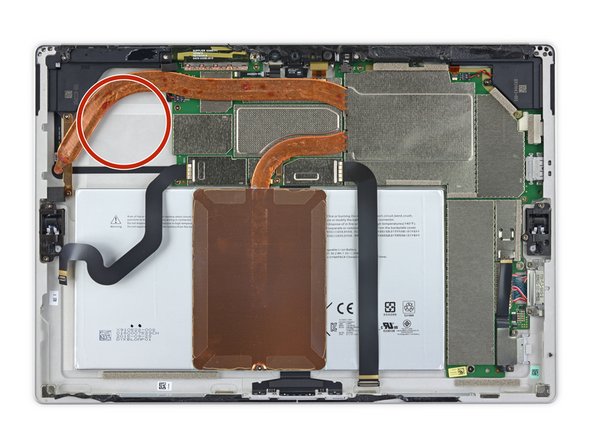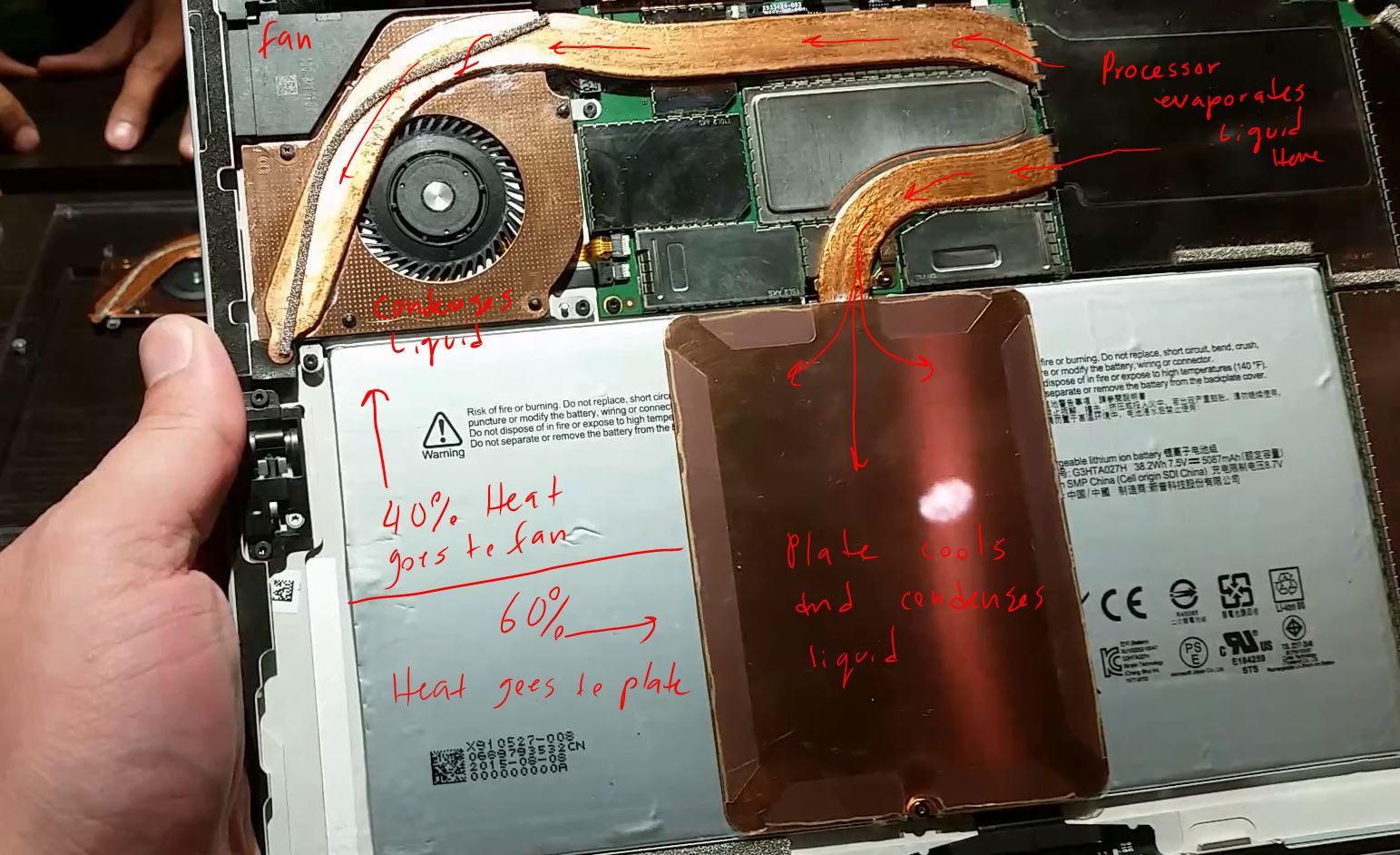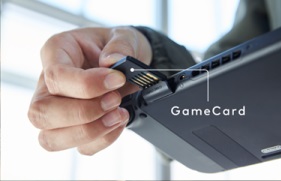You are using an out of date browser. It may not display this or other websites correctly.
You should upgrade or use an alternative browser.
You should upgrade or use an alternative browser.
- Status
- Not open for further replies.
Even Macbook Air could have its own fan. I don't think the thickness is matter.What style fan do you guys think is inside the Switch? The Switch is still very thin in the scheme of things. I have been searching micro fans, but I haven't seen anything that throw the air in such a way that pushing the air out of the top vent.
What style fan do you guys think is inside the Switch? The Switch is still very thin in the scheme of things. I have been searching micro fans, but I haven't seen anything that throw the air in such a way that pushing the air out of the top vent.
Highly unlikely to see an appropriate solution in a parts catalogue as these kinds of ultra-thin devices tend to all get bespoke coolers. I hope it's a large diameter low rpm solution but it'll be fun to see the first teardowns (I highly doubt we'll get jack from Nintendo on this prior to launch).
Custom fans are usually using a standard fan motor and they ask the manufacturer for a custom blade profile if necessary. For blowers, it could use a custom shroud as part of the product casing, but it's an unimportant detail. Nintendo have historically used off-the-shelf parts from Delta or Nidec without any form of modifications, while MS and Sony have used standard fans with a custom blade profile. I don't see Nintendo making a custom blade, only a custom shroud.
If it's 10W to 15W continuous when docked, they probably need at least 2 CFM.
Do we know how thick it is? Does it look at least 15mm? If they have enough thickness for a 10mm assembly, my wild guess would be the Delta BFB series.... it could use a BFB0505L with a custom shroud. Very low noise, very low cost, huge reliable supplier.
http://partner.delta-corp.com/Products/FANUploads/Specification/BFB50x50x10mm-C.pdf
Hey, it's a wild guess, what else are we supposed to do?
If it's 10W to 15W continuous when docked, they probably need at least 2 CFM.
Do we know how thick it is? Does it look at least 15mm? If they have enough thickness for a 10mm assembly, my wild guess would be the Delta BFB series.... it could use a BFB0505L with a custom shroud. Very low noise, very low cost, huge reliable supplier.
http://partner.delta-corp.com/Products/FANUploads/Specification/BFB50x50x10mm-C.pdf
Hey, it's a wild guess, what else are we supposed to do?
Surely the shroud can be part of the casing design, thus eliminating that overhead?Custom fans are usually using a standard fan motor and they ask the manufacturer for a custom blade profile if necessary. For blowers, it could use a custom shroud as part of the product casing, but it's an unimportant detail. Nintendo have historically used off-the-shelf parts from Delta or Nidec without any form of modifications, while MS and Sony have used standard fans with a custom blade profile. I don't see Nintendo making a custom blade, only a custom shroud.
Yeah, it saves at least an additional mm?Surely the shroud can be part of the casing design, thus eliminating that overhead?
They can also route the intake in the most compact way: have a circular grill on the back, so they wouldn't need a cavity like the PS4 needs (in order to take the air from the sides).
Add maybe 2 mm for the screen assembly, and they have enough left for a thick plastic providing a traditional Fisher Price feel.

I called maxwell 3 months ago. Now I am going to call 20nm. I can't wait to be proven wrong but nintendo is nintendo.
Since 20nm was last introduced, TSMC has developed processes like HPC/HPC+ which are further improvements on 28 power, performance, and cost. It would not surprise me if Nintendo went with something like that instead of 20nm or 16nm.
perhaps a page out of surface pro 4Yeah, it saves at least an additional mm?
They can also route the intake in the most compact way: have a circular grill on the back, so they wouldn't need a cavity like the PS4 needs (in order to take the air from the sides).
Add maybe 2 mm for the screen assembly, and they have enough left for a thick plastic providing a traditional Fisher Price feel.


Depending on what the back material is made out of they could transfer heat from the copper to base in docked mode.
Or perhaps they will do what I do to my surface pro 1 when gaming , point a fan at the back lol I can shave off 5 degrees on it
I don't think it applies to what Nintendo needs:
Expensive (lots of copper). Compromised comfort letting the back become hot. Under specced heat management relying on never using it for sustained max power. It must have temperature throttling. Perfect place to destroy the battery with heat cycles. Can't put it flat on a table without overheating.
Nintendo doesn't have that sort of liberty, they must do it the proper way with sustained max power consumption while gaming, and they cannot do temperature throttling. Letting the back become hot would be wrong for a portable console. Unless it's only a couple watts, but then they don't really need a fan anyway, it's like a normal tablet power consumption.
When docked it's kind of easy, they can always put a fan in the dock... the interesting part will be how much power it has when mobile.
Expensive (lots of copper). Compromised comfort letting the back become hot. Under specced heat management relying on never using it for sustained max power. It must have temperature throttling. Perfect place to destroy the battery with heat cycles. Can't put it flat on a table without overheating.
Nintendo doesn't have that sort of liberty, they must do it the proper way with sustained max power consumption while gaming, and they cannot do temperature throttling. Letting the back become hot would be wrong for a portable console. Unless it's only a couple watts, but then they don't really need a fan anyway, it's like a normal tablet power consumption.
When docked it's kind of easy, they can always put a fan in the dock... the interesting part will be how much power it has when mobile.
Last edited:
Patents are showing four intakes slits spread across the bottom edge, seems kind of like the PS4 by making laminar flow across the surface of the case to keep it cool to the touch. So there is a cavity necessary after all. The height of the fan blades wouldn't be much taller than the width of the outlet on top. Kind of small. Nobody likes small.
I don't think it applies to what Nintendo needs:
Expensive (lots of copper). Compromised comfort letting the back become hot. Under specced heat management relying on never using it for sustained max power. It must have temperature throttling. Perfect place to destroy the battery with heat cycles. Can't put it flat on a table without overheating.
Nintendo doesn't have that sort of liberty, they must do it the proper way with sustained max power consumption while gaming, and they cannot do temperature throttling. Letting the back become hot would be wrong for a portable console. Unless it's only a couple watts, but then they don't really need a fan anyway, it's like a normal tablet power consumption.
When docked it's kind of easy, they can always put a fan in the dock... the interesting part will be how much power it has when mobile.
eh the surface pro 4 with the core m chip never gets more than warm and that's the one at the top with no fan.
Nintendo has vents at the top

and the base of the dock is quite big

So surely there are vents at the bottom.
A large area heat plate would spread the heat out and with a low powered fan would keep it very cool and while in dock mode a higher powered larger fan can cool it at faster temps
It's putting the heat on the case before dissipation in the air, this is only fine for low power density (case surface size versus wattage). It's either getting the casing hot, or it's low efficiency. Heat dissipation efficiency is directly proportional to the temperature delta against ambient.
If nintendo wants a high power density, hotter heat sink means higher efficiency, and they need to move proportionally less air per watt. And then the hot air must be out without going through any other parts, not going through the case. You'll notice the heat sink fins are right at the edge of the outlet at the top.
Surface pro 4 can't sustain more than 11W of cpu, and 7W of gpu, despite the huge area, 1.7lb tablet, two massive heat pipes, a fan, and a lot of copper. The throttling is based on the case temperature, not the cpu, which exposes the design failure I was pointing out above. Not surprising the overheating issues have been solved with a firmware update, they probably just throttle more.
http://m.imgur.com/a/bY8YA

If nintendo wants a high power density, hotter heat sink means higher efficiency, and they need to move proportionally less air per watt. And then the hot air must be out without going through any other parts, not going through the case. You'll notice the heat sink fins are right at the edge of the outlet at the top.
Surface pro 4 can't sustain more than 11W of cpu, and 7W of gpu, despite the huge area, 1.7lb tablet, two massive heat pipes, a fan, and a lot of copper. The throttling is based on the case temperature, not the cpu, which exposes the design failure I was pointing out above. Not surprising the overheating issues have been solved with a firmware update, they probably just throttle more.
http://m.imgur.com/a/bY8YA

Last edited:
- Status
- Not open for further replies.
Similar threads
- Replies
- 21
- Views
- 6K
- Replies
- 150
- Views
- 26K
- Replies
- 90
- Views
- 13K

